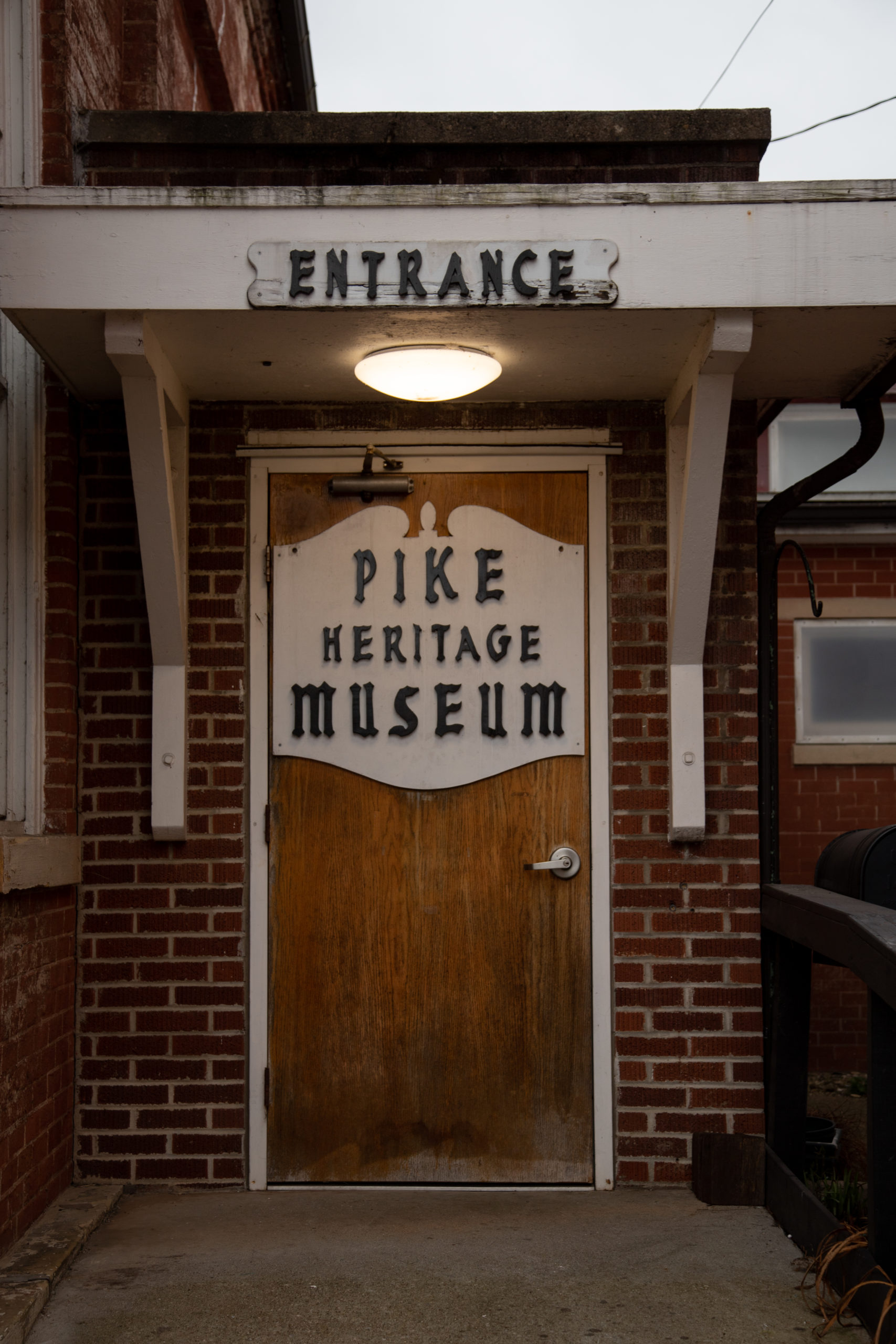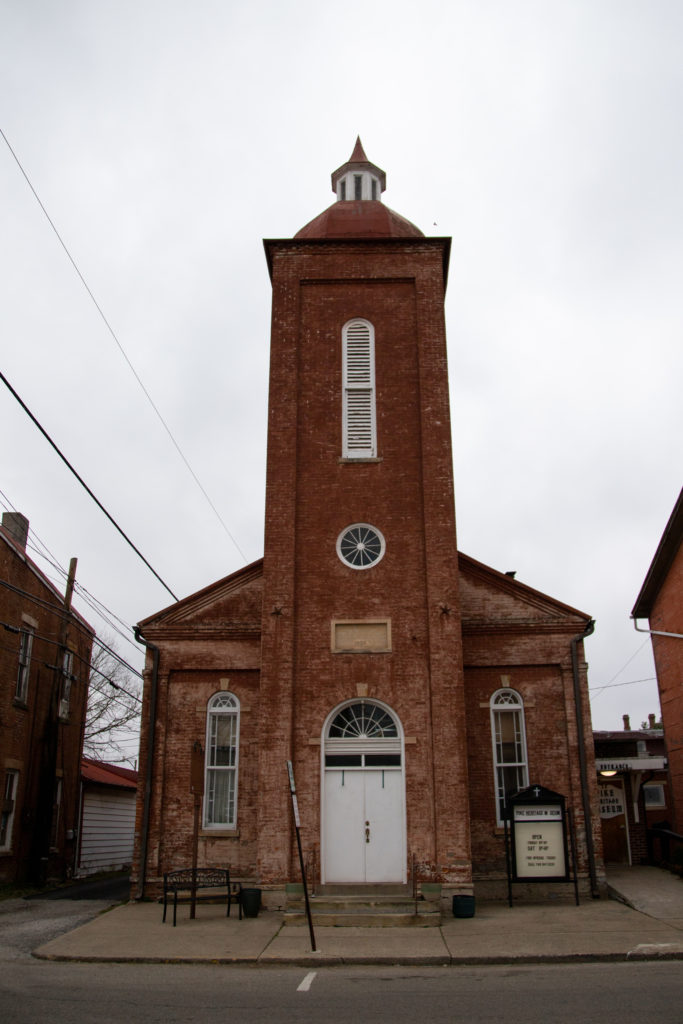
The Foundation preserves local history at its museum in the Waverly Canal Historic District
In downtown Waverly, a church towers over South Market Street. A weathered plaque above the door reads: “Deutsche Evangelische Kirche” and below this, “1859”. A side entrance is stamped with striking letters that hark back to old German calligraphy. What was once a place of worship now goes by a new moniker: The Pike Heritage Museum.
The Pike Heritage Foundation, started in 1983, celebrates its 40th anniversary this year. Its board members, all of whom have a knack for local history, dedicate their time to teaching people about Pike County’s past. Talley Pratt, one of the board members, says the group is mainly focused on preparing for the anniversary by engaging with the community during annual events like the Pike County Fair, the Beaver Oktoberfest, and the Jingle Bell Parade in Waverly.
By Jack Knudson
Waverly: A Canal Era Hub
The city of Waverly itself has miniature stories around every corner, making it a fitting home for the museum. Quickly after the founding of Waverly — originally called Union Town — in 1829, the town experienced substantial growth that was influenced by the Ohio-Erie Canal, which ran through its center. German immigrants largely contributed to the construction of the canal and operated the boats, leading Waverly and other cities in Southeast Ohio to gain a significant German population.
Inside Waverly’s post office, a mural shares a glimpse of how the “Canal Era” looked: a packet boat filled with men in top hats and parasoul-holding women appears ready to dock as curious onlookers observe from a bridge above the canal. The painting, titled Arrival of the Packet, was completed in 1942 by Roy Best, an artist originally from Waverly. Best was commissioned by the Section of Painting and Sculpture, a now-dissolved project established during the Great Depression that installed over one thousand works of art in public buildings.
A building in the background of the mural has the name “James Emmitt” running down its foundation. This name remains recognizable in Waverly today, as James Emmitt helped the city flourish in the Canal Era. Emmitt was an entrepreneur and Scioto Valley’s first self-proclaimed millionaire who started several business endeavors, including a grain mill and a distillery. According to the city of Waverly’s website, he “was said to employ half the men in Waverly.”
Emmitt also led a successful campaign to move the Pike County Courthouse from Piketon to Waverly, and as a result, Waverly is still the county seat to this day. Flyers for the campaign were even printed in German because of the immigrant population. The Emmitt House, a historic hotel and restaurant built by Emmitt to capitalize on canal trade, burned down in 2014, but is still remembered fondly in the city.
Newspapers, Portraits, and an Organ
Those who step into the museum are greeted with hundreds of relics that represent each chapter in Pike County’s history. The narrow hallway at the entrance recounts the stories of local veterans. Glass cases hanging on the wall protect black & white photos of young soldiers along with equipment, including a haunting gas mask with bug-like eye holes. A tattered edition of The Portsmouth Times, having taken on a yellowish-brown hue in old age, declares in triumphant subtitles that World War II has ended.
Visitors will likely be drawn into the main room, where the beating heart of the museum — an organ with a neat crown of golden pipes that shoot toward the ceiling — stands tall like a wise grandfather perusing his collection of antiques. It’s easy to spend hours scrutinizing everything here; in one corner is Beaver’s “First Fire Apparatus”, a gangly ancestor of the fire truck with the same bright red motif. Nearby, other pieces commemorate Pike County legends like James Emmitt and Samuel Slavens, who was posthumously awarded the Medal of Honor for his involvement in the Andrews Raid, also known as The Great Locomotive Chase, during the Civil War.
Pratt says there are several additions that the museum is thinking of implementing this year, the most critical one being a proper inventory system to keep track of items.
“When we first started in 1983, we were trying to get started so we took just about anything and everything. Therefore, we’ve ended up with quite a few multiples, like we have five or six typewriters,” Pratt says.
One idea Pratt has is to feature rotating displays. She points to a wall that is covered entirely in large farm tools like ice tongs and a scythe. Other thematic exhibits, such as one that represents logging in the county, could be introduced temporarily in this area, Pratt says. She also expresses interest in expanding the collection of items related to another major part of Pike County history, the Portsmouth Gaseous Diffusion Plant, often referred to as just “The Atomic Plant”.
However, these changes would require the museum to free up space. Pratt thinks they will apply for a grant to convert one of the two bathrooms into storage. Though these updates will keep the museum busy, hopes are high as Pratt and the other board members continue with their mission of historic preservation.
“It’s a…venture of love,” Pratt, pausing to think, says before bursting out laughing. “It also is time consuming … but we’re trying to get ready for the 40th anniversary, and so we want to get it a little bit better organized and a little bit cleaner.”
